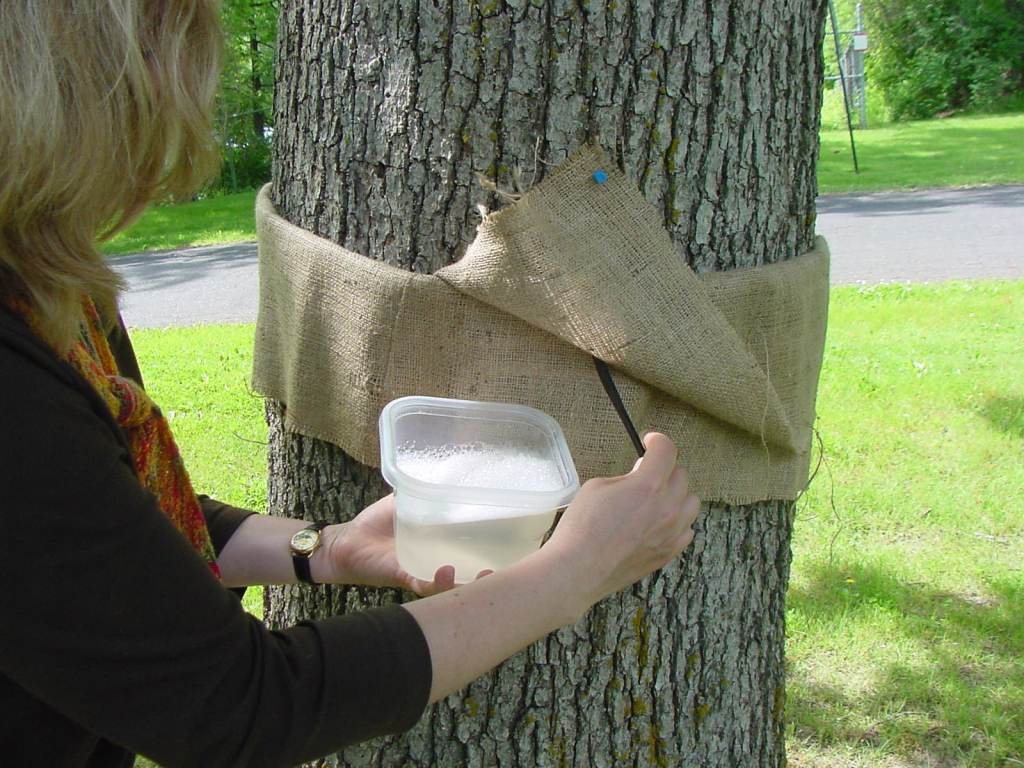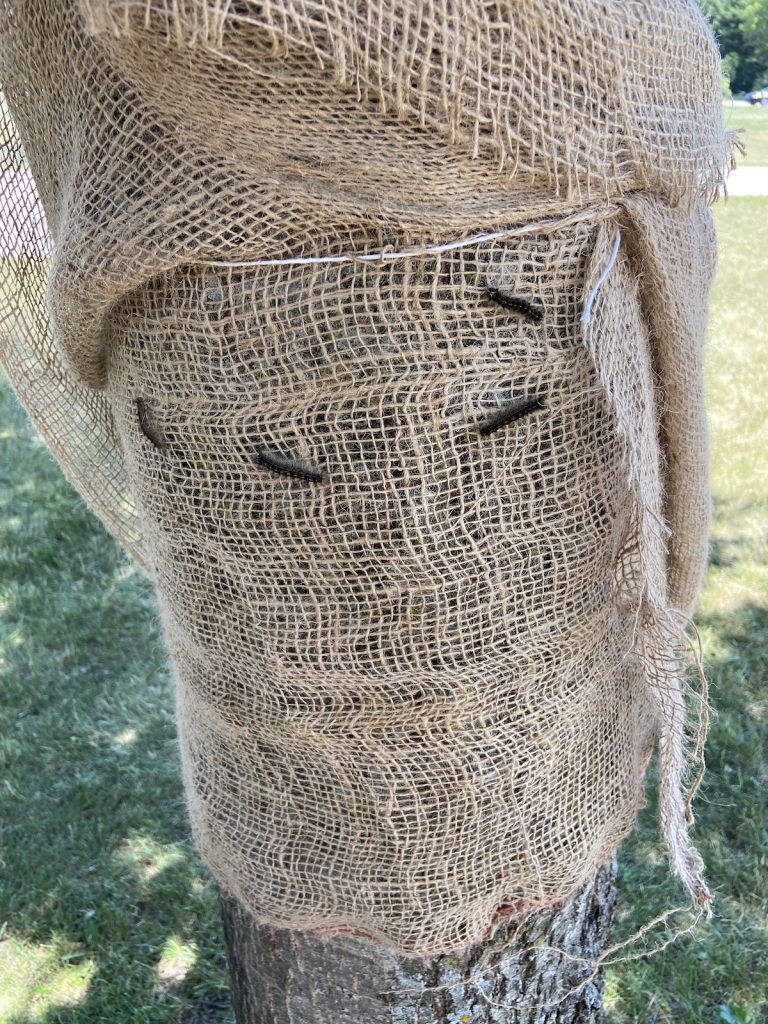Become a super-predator–put up burlap collection bands
Spongy moth (Lymantria dispar) caterpillars will make their presence known this month! Starting in June, caterpillars will leave the canopy of trees during the day to hide in crevices on the trunks of trees, the sides of buildings and even on outdoor furniture or play equipment. They return to the canopy each evening (or on a very cloudy day) to eat leaves all night.
You can take advantage of this behavior to reduce the number of caterpillars on your landscape trees by putting up burlap collection bands and turning yourself into a super-predator. Caterpillars find the burlap band an attractive hiding spot and will congregate there each afternoon. An easy way to eliminate caterpillars that have congregated is to scrape them into a cup of soapy water. Full instructions on how to make a burlap collection band can be found here.
NOTE: Spongy moth caterpillars are covered with fine “hairs” (setae) that can cause both skin and respiratory irritation. Avoid touching caterpillars bare-handed; disposable gloves, forceps, or other tools are recommended to knock caterpillars into a container of soapy water. Setae can remain in clothing, so fabric gloves or clothes that have contacted spongy moths should be washed separately. If skin irritation occurs, consult a physician for advice on topical medications to relieve irritation.
Insecticides may also be used to help control spongy moth caterpillars at this time of year.
At chest height, wrap a 12 – 18 inch tall piece of burlap or light colored cloth around the tree and fasten it with twine around the middle.
Fold the top half of the burlap over the twine and over the bottom half of the burlap to create a “skirt”.







